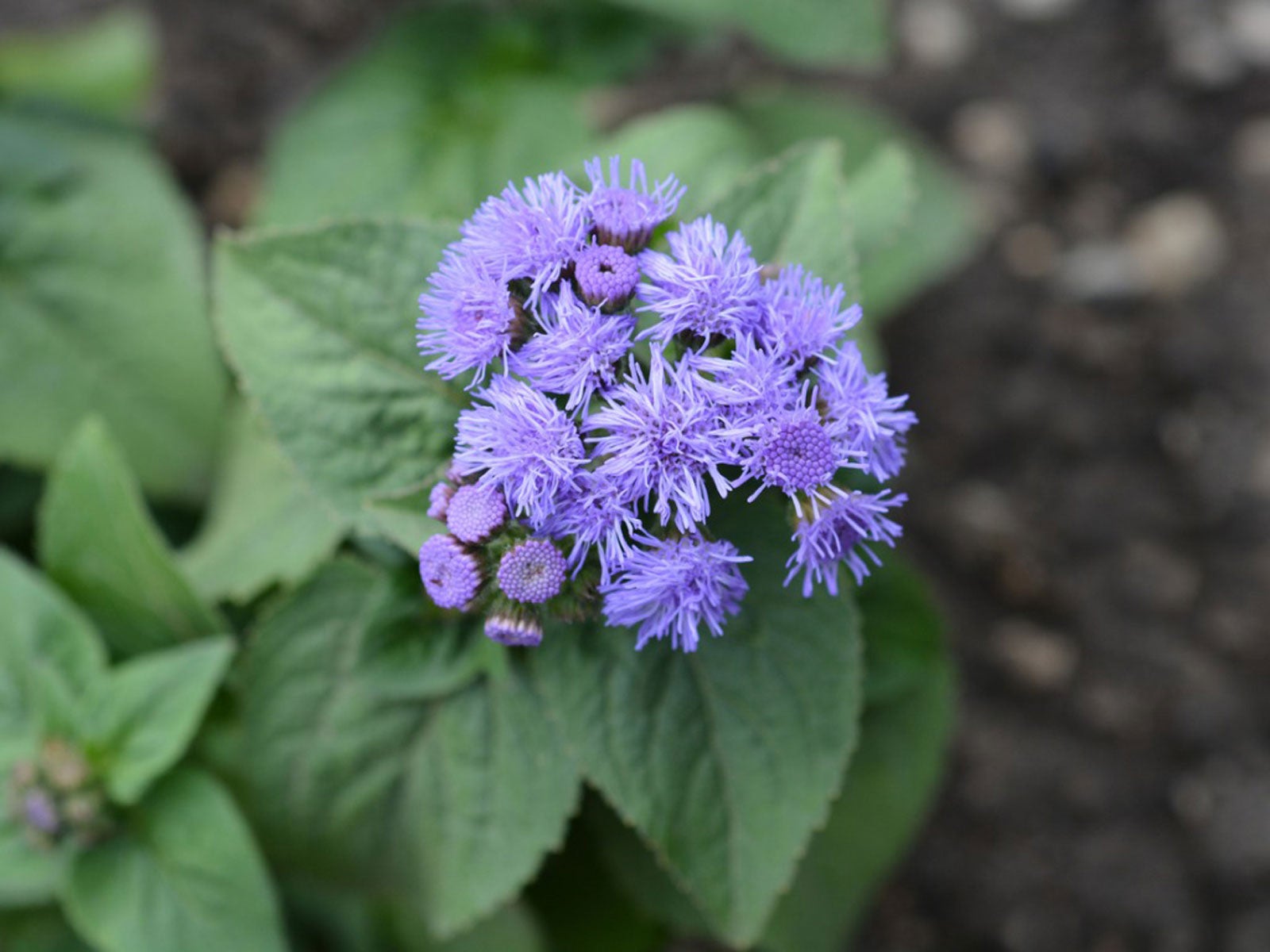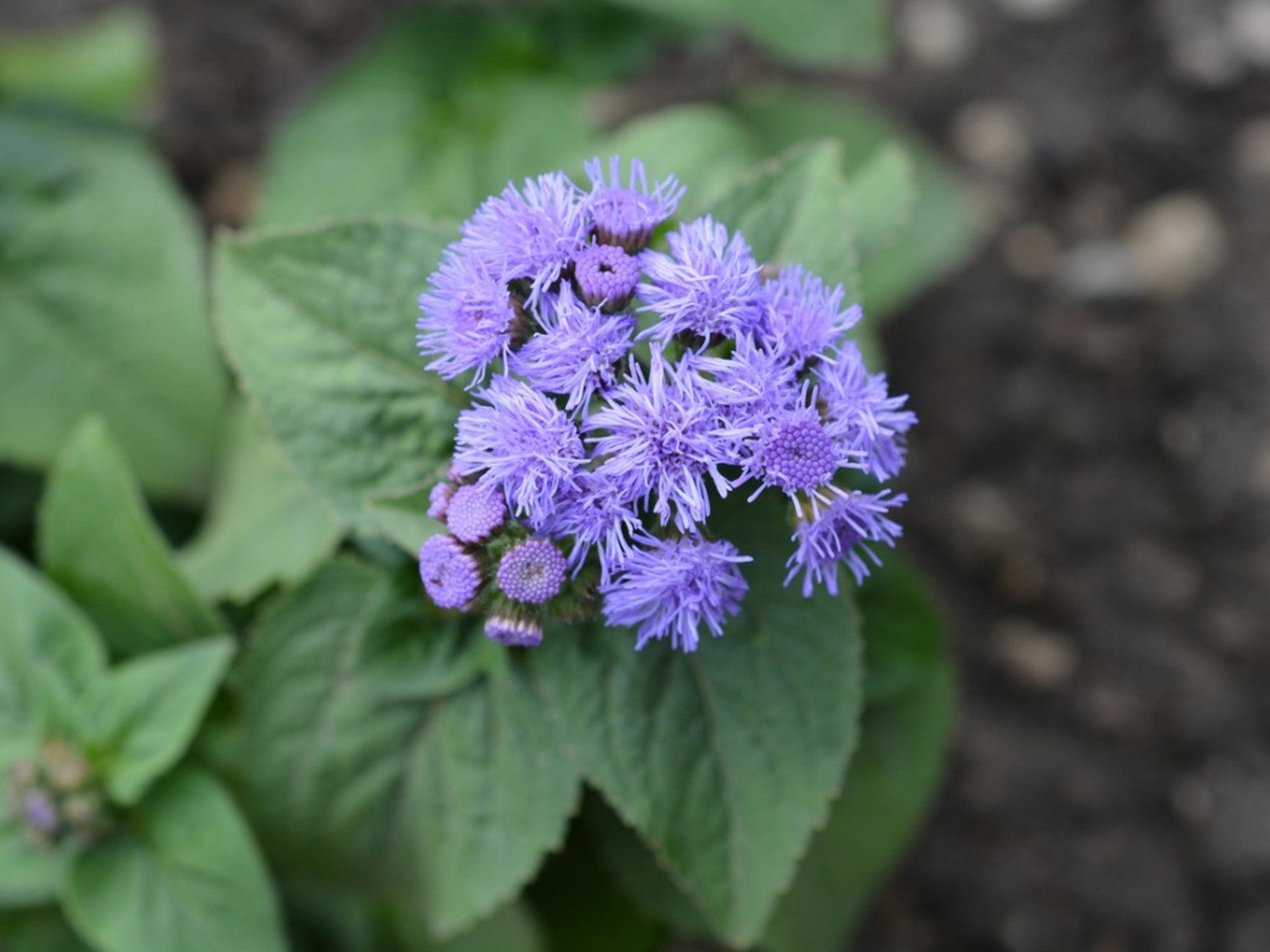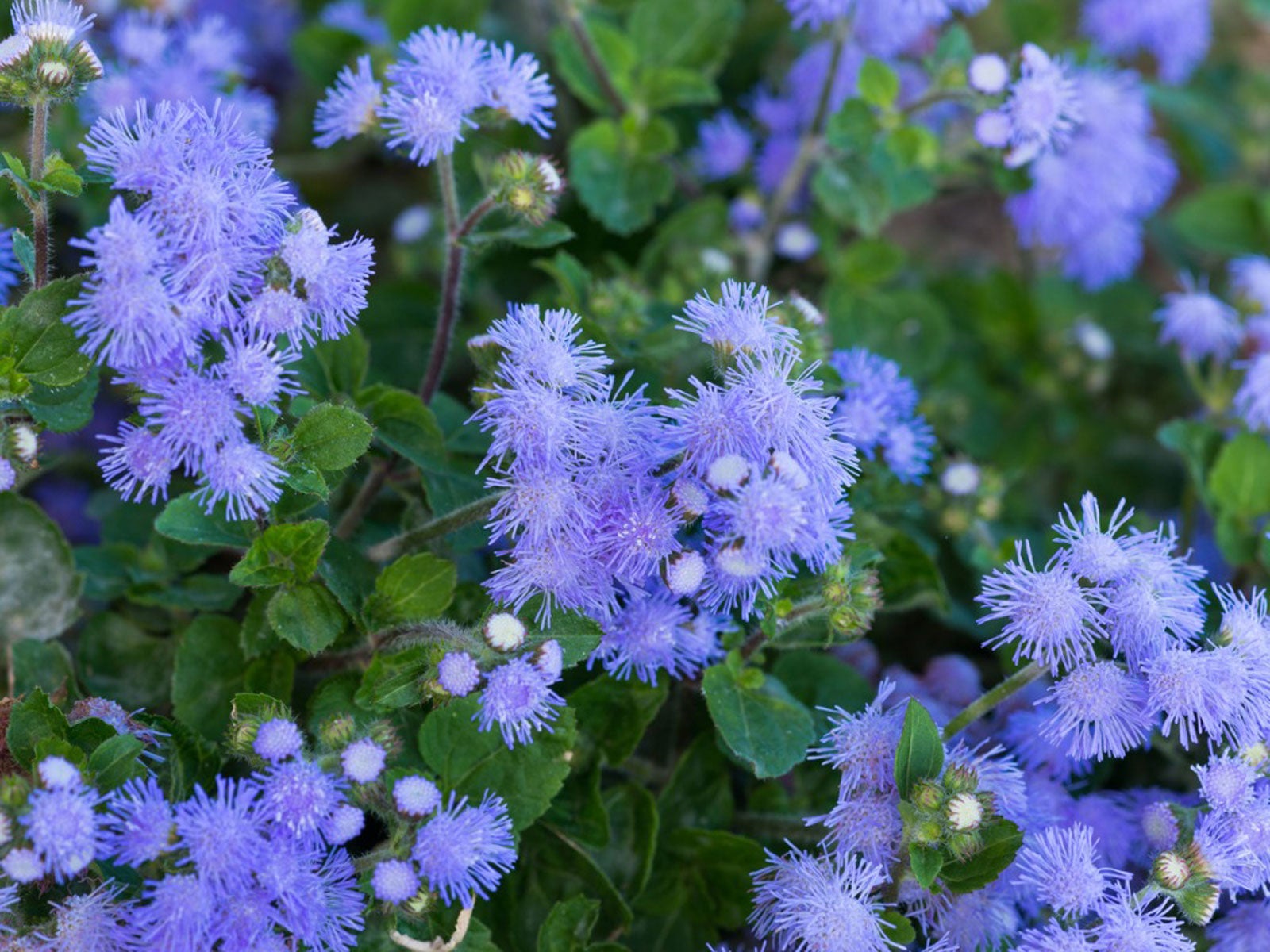Problems With Ageratum – How To Grow Healthy Ageratums


There are many species of ageratum you can use in the garden. Generally used as annuals, these are also known as floss flowers for their wispy, delicate petals. Height of varieties vary, but most ageratum types grow in low mounds with abundant flowers. They are great in borders, beds, and window boxes and, yet, they do have their problems. Learn how to troubleshoot and manage these to grow healthy, beautiful ageratum flowers.
How to Grow Healthy Ageratums
Ageratum problems can be largely prevented if you grow these plants under the right conditions. They need full sun and will tolerate only very light shade.
The soil should drain very well but remain moist most of the time. The soil should also be fertile and amended with compost, if necessary.
Deadhead spent flowers for more blooms and to reduce disease risk.
Troubleshooting Problems with Ageratum
With the right conditions, this plant is relatively trouble free, but there are some ageratum plant issues that may plague your beds and borders. Know what to look for and how to prevent and manage these problems.
Fungal issues
Fungal diseases such as powdery mildew, gray mold, or Pythium may occur in and cause damage to your ageratum plants. Signs include white growth on leaves and flowers and damping off of stems at the soil level. Plants may wilt and die.
The best way to manage fungal infections is to use drip irrigation. This prevents the splashing of water and fungal spores onto leaves and stems that overhead watering can cause. Good circulation between plants for air flow is also important and keep mulch from getting too close to the stems.
Gardening tips, videos, info and more delivered right to your inbox!
Sign up for the Gardening Know How newsletter today and receive a free copy of our e-book "How to Grow Delicious Tomatoes".
Insect damage
Ageratum may also suffer damage from insects. Thrips, aphids, and spider mites feed on the leaves. You’ll see silver gray spots at feeding sites or yellow spots on the undersides of leaves. If the infections are bad, the plant will wither and even die.
Aphid feeding may cause leaves to curl. Aphids can also be problematic because they produce honeydew. This can lead to sooty mold infections. To manage these problems, you can try appropriate fungicides or pesticides.
The best way to grow healthy ageratum plants is to provide the right conditions. Weakened plants are more likely to be infested by pests, while poor air circulation and too much water triggers fungal infections.

Mary Ellen Ellis has been gardening for over 20 years. With degrees in Chemistry and Biology, Mary Ellen's specialties are flowers, native plants, and herbs.
-
 How To Make A Bouquet Garni Or Herb Bundle For Cooking
How To Make A Bouquet Garni Or Herb Bundle For CookingIf you’re a great cook, you may have made an herb bundle before. If this is a new idea, learn how to add sparkle and interest to your dish with a bouquet garni.
By Amy Grant
-
 ‘Coral Charm’ Peony Care For Sublime Semi-Double Peonies With Lush Salmon Pink Flowers
‘Coral Charm’ Peony Care For Sublime Semi-Double Peonies With Lush Salmon Pink FlowersPeonies are known for their soft baby pink or magenta tones, but if plushy coral blooms are your thing, here’s our guide to the ultimate ‘Coral Charm’ peony care
By Tonya Barnett
-
 Popular Ageratum Varieties – Learn About Different Types Of Ageratum Plant
Popular Ageratum Varieties – Learn About Different Types Of Ageratum PlantWith blooms that begin in late spring and last until autumn, you’ll find types of ageratum varieties that are perfect for your beds and borders. Read on for more.
By Becca Badgett
-
 Ageratum Seed Germination – Growing Ageratum From Seed
Ageratum Seed Germination – Growing Ageratum From SeedAgeratum is a popular annual and one of the few true blue flowers. It’s also easy to grow from seed. Click here to learn more.
By Susan Albert
-
 Growing Ageratum Flower: How To Plant Ageratum
Growing Ageratum Flower: How To Plant AgeratumBlue flowers for the garden are sometimes difficult to grow. But Ageratum plants, with fluffy blue flowers, add the desirable blue color to your garden, and caring for them is simple. This article will help.
By Becca Badgett